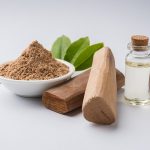The Controlled Pressure Drop (CPD) process is an innovative and environmentally friendly technique for extracting essential oils from aromatic plants. It is a variation of the traditional steam distillation method and offers several advantages, including reduced extraction time, improved essential oil yield, and enhanced quality of the final product. In this article, we will explore the principles, process, benefits, and potential applications of the Controlled Pressure Drop process for extracting essential oils.
Principles of Controlled Pressure Drop (CPD) Process:
The Controlled Pressure Drop process is based on the principles of steam distillation, a well-established method for extracting essential oils from plant materials. Steam distillation involves passing steam through the plant material to vaporize the volatile essential oils. The vapor is then condensed back into a liquid, resulting in the separation of essential oil from the water.
In the CPD process, the key innovation lies in controlling the pressure drop during the steam distillation process. By carefully managing the pressure changes, the efficiency of the extraction is significantly improved. The process involves using a specialized distillation apparatus that allows for precise control of pressure, temperature, and other parameters.
Process of Controlled Pressure Drop (CPD) for Essential Oil Extraction:
The CPD process for extracting essential oils involves several key steps:
- Loading of Plant Material: The aromatic plant material, such as flowers, leaves, or other parts, is loaded into the distillation apparatus.
- Steam Injection: Steam is introduced into the apparatus and passed through the plant material, vaporizing the essential oils and other aromatic compounds.
- Pressure Control: During the steam distillation process, the pressure is carefully controlled to achieve a controlled pressure drop at specific intervals. This pressure drop enhances the extraction efficiency and improves the essential oil yield.
- Condensation and Separation: The vapor containing the essential oils and other volatile compounds is then condensed back into a liquid. The condensed liquid is collected in a separator, where the essential oil, being less dense than water, floats on the surface and can be easily separated.
- Collection of Essential Oil: The collected essential oil is further processed and purified, if necessary, to remove any remaining impurities or water. The final product is a high-quality essential oil with enhanced aroma and therapeutic properties.
Benefits of Controlled Pressure Drop (CPD) Process:
- Improved Essential Oil Yield: The CPD process allows for better extraction efficiency, resulting in higher essential oil yields compared to traditional steam distillation methods.
- Reduced Extraction Time: The precise control of pressure and other parameters in the CPD process leads to faster extraction times, making it a more time-efficient method.
- Enhanced Essential Oil Quality: The CPD process can yield essential oils with improved aroma and higher concentrations of bioactive compounds, enhancing their overall quality and therapeutic properties.
- Energy Efficiency: The CPD process can be more energy-efficient compared to other extraction methods, as it reduces the time and energy required for extraction.
- Environmentally Friendly: The CPD process is considered environmentally friendly because it uses water and steam as the primary solvents, and it minimizes the use of organic solvents or chemical additives.
Potential Applications of Controlled Pressure Drop (CPD) Process:
The Controlled Pressure Drop process has a wide range of potential applications in the essential oil industry and beyond:
- Aromatherapy: The high-quality essential oils obtained through the CPD process can be used in aromatherapy for their therapeutic benefits, promoting relaxation, stress relief, and overall well-being.
- Perfumery: Essential oils extracted using the CPD process can be utilized in the perfumery industry to create fine fragrances with enhanced aroma and complexity.
- Natural Products: The CPD process can be applied to extract essential oils for use in natural and organic personal care products, cosmetics, and cleaning formulations.
- Pharmaceutical and Nutraceuticals: The high-quality essential oils obtained through CPD may find applications in pharmaceutical and nutraceutical products for their potential health benefits.
- Food and Beverage: Some essential oils obtained through the CPD process can be used as natural flavoring agents in the food and beverage industry, enhancing the taste and aroma of products.
In conclusion, the Controlled Pressure Drop (CPD) process is an advanced and efficient method for extracting essential oils from aromatic plants. By carefully controlling the pressure during steam distillation, the CPD process improves the extraction efficiency, resulting in higher essential oil yields and enhanced product quality. Its energy efficiency and environmental friendliness make it a promising and sustainable option for essential oil extraction in various industries. As research and technology continue to advance, the CPD process is likely to gain more attention and become a valuable tool in the essential oil industry and other related fields.


Leave a Reply